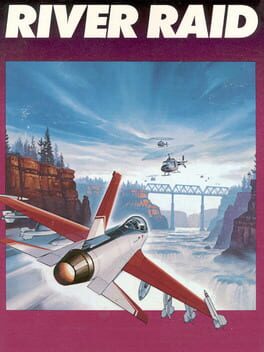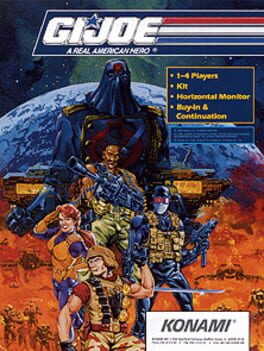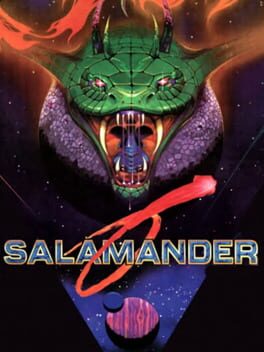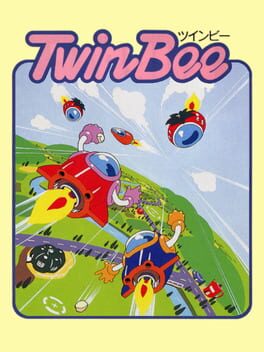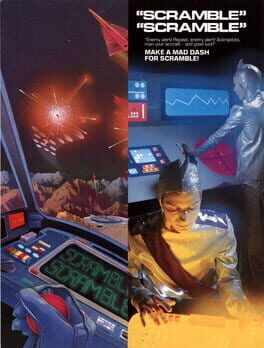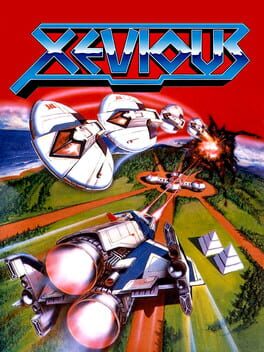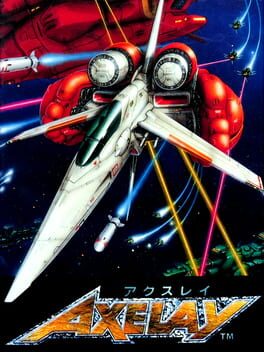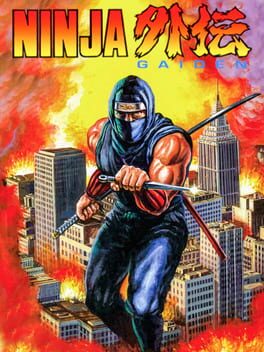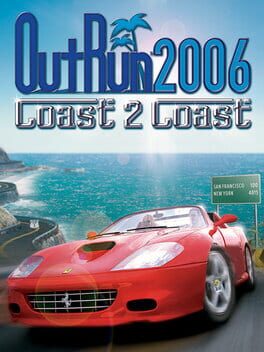ogremode
2006
Replay. Having played a handful of "beat them up" games between finishing God Hand for the first time and the second time, it's fun seeing so many of the ideas that God Hand homages. This review is just a note on some of those.
From Final Fight, there's a handful of enemy types—skinny knife throwers, agile women, plump guys, and the idea of tall and short enemies indicating their strength. There's also the "destroy a car" minigame, and in God Hand there's even throwbacks to that 90s style homophobia. From Streets of Rage, God Hand takes the whip enemies, and also the thing where enemies will sit on the ground and get pouty.
After finishing God Hand again, I started playing God Hand for a third time. It just feels amazing to play. The new game experience reminds me a lot of FromSoft in the level of skill (and level/enemy knowledge) you carry over, even though you don't carry over techniques you bought or health or "tension point" upgrades; probably the game I'd compare it to most is Sekiro. When I finished that game, I ended up speeding through the NG+ and didn't die until I got to the burning bull enemy, which was immensely satisfying. On the other hand, God Hand also feels like there's a lot of skill I have left to build. I started playing the hard mode and got my ass beat in the first level. I want to get there, but it is truly difficult.
From Final Fight, there's a handful of enemy types—skinny knife throwers, agile women, plump guys, and the idea of tall and short enemies indicating their strength. There's also the "destroy a car" minigame, and in God Hand there's even throwbacks to that 90s style homophobia. From Streets of Rage, God Hand takes the whip enemies, and also the thing where enemies will sit on the ground and get pouty.
After finishing God Hand again, I started playing God Hand for a third time. It just feels amazing to play. The new game experience reminds me a lot of FromSoft in the level of skill (and level/enemy knowledge) you carry over, even though you don't carry over techniques you bought or health or "tension point" upgrades; probably the game I'd compare it to most is Sekiro. When I finished that game, I ended up speeding through the NG+ and didn't die until I got to the burning bull enemy, which was immensely satisfying. On the other hand, God Hand also feels like there's a lot of skill I have left to build. I started playing the hard mode and got my ass beat in the first level. I want to get there, but it is truly difficult.
1982
River Raid is an early vertical shooter, and it's unsurprisingly rudimentary. You fly a plane down a river and attack enemies. Like Konami's even earlier shooting game, Scramble, you have a fuel meter that slowly ticks down that you'll need to refuel. Notably it was programmed by Carol Shaw, who was able to retire at 35 due to the success of this game.
1992
GI Joe is a simple but pretty fun rail shooter. Unlike Space Harrier, you're bound to the ground and can only move left or right; you can aim up and down from there, but you're otherwise stuck aiming forward from the spot you're facing. I kind of wonder why they didn't go the Space Harrier route, since the GI Joes have jetpacks, but it may have gotten too hectic with multiplayer. You can pick up missiles as you continue, which due a lot more damage than your There are three stages, each composed of different areas within them—you're running towards cobra's base, then inside, or through a cave base etc. The sprites are right out of the comics/cartoon and are fun to see, especially the boss sprites.
1986
I played the Japanese arcade version bundled with Konami Arcade Classics. An incremental upgrade from Gradius that follows a similar formula, flipping vertical and horizontal perspectives as the levels go on. The particular way the perspective flips here is super sharp in presentation, and there's a good set of upgrades. It is also insanely difficult, and I recommend playing the PC-Engine port instead; it's too bad that version isn't available, because for me it made Salamander a lot more enjoyable.
1985
Of all the very early shooting games I've played, TwinBee is probably my favorite. It's almost a straight upgrade of Xevious but it adds its own bells and whistles. I especially like the bells—these are your upgrade icons, and drop from clouds you fire through them. The really fun part about them is that they change color when you shoot them, and each color is a different type of upgrade; they also bounce up the screen when you fire at them, so you can find yourself juggling them for the right upgrade, and it's just really fun to keep them up in the air while managing the enemies on screen.
The upgrades themselves are pretty limited, but I like the option style, which has a ghost of your character follow behind you and shoot right behind you, which encourages you to move your character around a lot. I'm looking forward to seeing how the series evolves.
The upgrades themselves are pretty limited, but I like the option style, which has a ghost of your character follow behind you and shoot right behind you, which encourages you to move your character around a lot. I'm looking forward to seeing how the series evolves.
1981
Scramble is Konami's earliest horizontal shooting game. It's pretty rudimentary. You fire forward and also drop bombs on enemies on the ground. You also have a fuel gauge that slowly ticks down, and you'll need to refuel by attacking fuel depots.
It's pretty easy going until you get to the final zone, which requires you to fly through tunnels. For the first time in the game, this section also requires accelerating forward. You move forward at a constant pace, but can fly till about halfway horizontally into the screen. You have to do this during certain sections in the final level as you exit a tunnel from a higher part of the level, then have to fly to the opposite corner. You don't have enough time coming out of the tunnel to lower your ship enough, so you have to fly forward out of the tunnel before the screen scrolls over there, then drop back and down at the same time. It's really unintuitive and feels pretty weird. After you get through the series of tunnels, you have a final bomb target to hit to win the game. This is also really difficult to nail, because you have to do a similar maneuver as above to get into the right position. It's kind of confounding and I don't think I would have figured out how to beat the game without watching examples on YouTube. Not nearly as fun as Xevious.
It's pretty easy going until you get to the final zone, which requires you to fly through tunnels. For the first time in the game, this section also requires accelerating forward. You move forward at a constant pace, but can fly till about halfway horizontally into the screen. You have to do this during certain sections in the final level as you exit a tunnel from a higher part of the level, then have to fly to the opposite corner. You don't have enough time coming out of the tunnel to lower your ship enough, so you have to fly forward out of the tunnel before the screen scrolls over there, then drop back and down at the same time. It's really unintuitive and feels pretty weird. After you get through the series of tunnels, you have a final bomb target to hit to win the game. This is also really difficult to nail, because you have to do a similar maneuver as above to get into the right position. It's kind of confounding and I don't think I would have figured out how to beat the game without watching examples on YouTube. Not nearly as fun as Xevious.
1982
Namco's Xevious is the original vertical shooter that everyone ripped off, and it's still a decent bit of fun today. You shoot enemies in the air while bombing targets on the ground. Projectiles and enemies are slow, but it can get a little bit hectic when there's a decent number of them on screen. Definitely worth spending some time with, to see where it all started.
2000
Sanvein, released in the States as Shooter: Starfighter Sanvein, is a highly stylistic 3d shooter that feels like a game built to run on the computers from Neon Genesis Evangelion. It looks amazing, and it's a lot of fun even just to get through the menus. If you're an Evangelion or shooter fan, absolutely worth checking out, though you might only stay briefly.
Developed by Success, who is more well-known for the Cotton series of shooters, for D3's budget Simple 1500 series, this is an arcadey, time attack 3d shooter with super fast micro levels. Each stage typically has less than five enemies to kill, and often you'll pop into a stage and pop right back out before racing over to the next one. There's a constantly ticking clock, and taking damage lowers how much time you have left. While the game is really fast paced and looks amazing, the sheer amount and lack of variety in the stages makes the game feel really repetitive. It's not that the core loop isn't fun, but that it isn't fun enough to sustain itself. Still, for me this is a "hidden gem" just because of how unique and cool it is look at.
Developed by Success, who is more well-known for the Cotton series of shooters, for D3's budget Simple 1500 series, this is an arcadey, time attack 3d shooter with super fast micro levels. Each stage typically has less than five enemies to kill, and often you'll pop into a stage and pop right back out before racing over to the next one. There's a constantly ticking clock, and taking damage lowers how much time you have left. While the game is really fast paced and looks amazing, the sheer amount and lack of variety in the stages makes the game feel really repetitive. It's not that the core loop isn't fun, but that it isn't fun enough to sustain itself. Still, for me this is a "hidden gem" just because of how unique and cool it is look at.
1992
I started playing Konami's SNES shmup Axelay because, quoting Wikipedia here, "Axelay was developed by most of the same team that would later go on to form Treasure, the creators of Gunstar Heroes." However, looking at the credits of both games on MobyGames, that doesn't really appear to be the case, only sharing "König" Kazuhiko Ishida, who is credited as "Support Programmer" here on Axelay, and "Treasure Logo Programmer" on Gunstar Heroes. I was fascinated by this false lineage, but, truly, this game shares more of a team with the best SNES Castlevania game, Super Castlevania IV, Contra III, and Snatcher.
Axelay has six stages, alternating between vertical and horizontal scrolling levels, like Konami's earlier shooter Salamander. The first level takes place high over the clouds, the second through a space station, the third over a city scape, the 4th through a canyon where you can also fly underwater, the 5th is a lava level that culminates in a giant lava mecha fight, and the 6th is a space level. The levels make heavy use of SNES's Mode 7 scrolling effect, and I love the shimmery look of it. My favorite level for its presentation was the 3rd, a city scape level with these floating bar obstacles that connect as you fly through them. I thought these bars were interesting obstacles, and found this section evocative. What exactly are these bars supposed to be? They felt like some kind of anti-ship defense for the city. Each level has its own flavor and interesting mechanics. For example, in the 4th level, there are glob aliens that will latch onto your ship and constantly drags you down, changing how the ship handles, but not outright damaging you.
This is the first shooter of the classic era I've played all the way through. While it doesn't exactly feel like a pre-Treasure Treasure game, I had a good time with it. (Also, as to pre-Treasure Treasure games, check out this web page I found researching this.)
Axelay has six stages, alternating between vertical and horizontal scrolling levels, like Konami's earlier shooter Salamander. The first level takes place high over the clouds, the second through a space station, the third over a city scape, the 4th through a canyon where you can also fly underwater, the 5th is a lava level that culminates in a giant lava mecha fight, and the 6th is a space level. The levels make heavy use of SNES's Mode 7 scrolling effect, and I love the shimmery look of it. My favorite level for its presentation was the 3rd, a city scape level with these floating bar obstacles that connect as you fly through them. I thought these bars were interesting obstacles, and found this section evocative. What exactly are these bars supposed to be? They felt like some kind of anti-ship defense for the city. Each level has its own flavor and interesting mechanics. For example, in the 4th level, there are glob aliens that will latch onto your ship and constantly drags you down, changing how the ship handles, but not outright damaging you.
This is the first shooter of the classic era I've played all the way through. While it doesn't exactly feel like a pre-Treasure Treasure game, I had a good time with it. (Also, as to pre-Treasure Treasure games, check out this web page I found researching this.)
2006
1988
Ninja Gaiden can be an excellent post-Castlevania NES action game, turning up the speed just so to forge its fast identity that would carry through for decades. Where Trevor Belmont plods his way towards Dracula's castle, and his whip attacks require a comparatively long wind up, Ryu Hayabusa dashes and flips fluidly through levels and whips his katana out with lightning speed—though, crucially, not instantly. In its best moments the level design supports and drives this speed, but too often, and especially as you get deeper into the game, enemies are placed directly where you would flip into them, brutally disrupting the flow. Most of the time these obstacle enemies only spawn as you get to the edge of a platform, when, if you're playing speedily, you've already jumped, so it feels especially unfair and punishing. You're forced to pause and wait for the enemy to move over, batting away enemy hawks in the meantime; it just doesn't really feel good. But the moment to moment action outside of this is a lot of fun and feels snappy.
The bosses are more merciful experiences, tests of your patience and problem solving more than they are your pure action skills, though they can require power-ups to make them at all bearable. They're fine and satisfying, but they don't feel necessarily of one with the speed that makes the levels so fun. Looking forward to playing the sequels.
The bosses are more merciful experiences, tests of your patience and problem solving more than they are your pure action skills, though they can require power-ups to make them at all bearable. They're fine and satisfying, but they don't feel necessarily of one with the speed that makes the levels so fun. Looking forward to playing the sequels.
2022
Install instructions at the end of this review...
The sequel to Outrun vastly improves upon the original game by adding a handful of empowering mechanics, and adding layers to the original vision. This can be annoying in bad games, but Yu Suzuki and team made something sparkling and beautiful here.
Outrun 2 gives you five gears to work up through. You'll rarely want to use anything but the last two. The speedometer is drawn in the right-hand corner, and every car has a different optimal place to upshift. When the space behind the needle is white, you're in a good place with your gear and speed. The starter cars have yellow spots on the speedometer that signal you should upshift, which are missing from the faster cars; you just have to time it so you upshift before your needle spills over to the red. I'm not sure if there's any mechanical bonus for upshifting while in the optimal spot, but even without that this feature brings the satisfying timing rhythm of the reloading mini-game from Gears of War.
The trick of the original Outrun is downshifting into corners so you can maintain control of the car, otherwise you will slide too far on either side off the road and into obstacles. When you downshift on the corners here, your car slides into a the most satisfying drift ever made. To me it feels somewhere between the Mario Kart 8 drift and the manual mini-game in Tony Hawk's Pro Skater. You have to lean your analog stick left or right into the drift, and time it just right when you come out of a drift to straighten your car—you also need to remember to upshift back into a higher gear to maintain your speed. Downshifting while turning isn't the only way to enter a drift—you can use your brake too—but it's the way that felt the most natural and optimal to me.
Drafting is as important as drifting. I smiled like a baby when I drove behind another car and not only got a slipstream effect, but a big SLIPSTREAM title in the middle of my screen like a trick from Tony Hawk Pro Skater, and when my Dino 246 GTS zoomed quickly behind the other car, sling-shotting around a DeVille with ease, it felt amazing. Unlike other arcade racers, there aren't dedicated boost spots on the road or nitrous you can kick off: the other cars on the road are your speed boosts. I've never played another game where the slipstream effect, a real-life racing technique, is this useful (or fun to use). There is also some risk-reward to this mechanic. Since you're going so fast, it's easy to smack into the back of the car that's pulling you forward. This isn't an unrecoverable moment in a race, so long as it happens early enough, and it doesn't mean you won't reach the goal in time in Outrun mode—you're afforded a few mistakes, but you will cut it close if you're not fast. Besides killing the momentum, what it does do is push the car you hit in front of you. There is no pit maneuver or side-swipe mechanic to take out the competition—if you hit the car in front of you, you are giving it a boost of their own. It's a beautiful solution to enforcing race etiquette afforded purely by its arcade style.
The slipstream effect is helpful in the rote races to speed around your rivals, but it is delightful in the Outrun mode, which is where you should be spending most of your time. You aren't racing other drivers through the five (or fifteen) locations; you're just trying to get to the end before the timer ticks down. And since you're in a hurry, of course there's traffic. But the traffic is an opportunity to get ahead of it and impress your girlfriend. While you're weaving through it like the most annoying 24 year old on the highway, your girlfriend asks, in a voice that's sweet yet coy, "How far are you going to take me?" The driving in Outrun 2006: Coast 2 Coast feels so visceral and satisfying, so good, that it's impossible to deny its sensual effect. I can't remember the last time I fell harder in love with a game than this recent tryst with Outrun 2006: Coast 2 Coast. I've played it every day since I started playing it; I only want to play more of it.
There are certain games I like to have on every PC I use, and this has quickly become one of those. I've written install instructions below, in case I forget.
---
Download Outrun 2006: Coast 2 Coast for PC from MyAbandonware dot com; use the MagiPack repack, which comes with the FXT mod pre-installed. After installing the MagiPack repack, navigate to the folder you installed it on your hard drive and run the FXTConfig.exe executable as admin. If you are installing this on a PC that hasn't had many games installed on it, you will need to install the Visual C++ Redistributable for Visual Studio 2015 x86 version. In the FXT mod settings, turn off XInput, or rumble might not work. After opening the game and saving your license, open up the license settings, set your name to ENTIRETY, then back out without saving to unlock all cars and tracks.
The sequel to Outrun vastly improves upon the original game by adding a handful of empowering mechanics, and adding layers to the original vision. This can be annoying in bad games, but Yu Suzuki and team made something sparkling and beautiful here.
Outrun 2 gives you five gears to work up through. You'll rarely want to use anything but the last two. The speedometer is drawn in the right-hand corner, and every car has a different optimal place to upshift. When the space behind the needle is white, you're in a good place with your gear and speed. The starter cars have yellow spots on the speedometer that signal you should upshift, which are missing from the faster cars; you just have to time it so you upshift before your needle spills over to the red. I'm not sure if there's any mechanical bonus for upshifting while in the optimal spot, but even without that this feature brings the satisfying timing rhythm of the reloading mini-game from Gears of War.
The trick of the original Outrun is downshifting into corners so you can maintain control of the car, otherwise you will slide too far on either side off the road and into obstacles. When you downshift on the corners here, your car slides into a the most satisfying drift ever made. To me it feels somewhere between the Mario Kart 8 drift and the manual mini-game in Tony Hawk's Pro Skater. You have to lean your analog stick left or right into the drift, and time it just right when you come out of a drift to straighten your car—you also need to remember to upshift back into a higher gear to maintain your speed. Downshifting while turning isn't the only way to enter a drift—you can use your brake too—but it's the way that felt the most natural and optimal to me.
Drafting is as important as drifting. I smiled like a baby when I drove behind another car and not only got a slipstream effect, but a big SLIPSTREAM title in the middle of my screen like a trick from Tony Hawk Pro Skater, and when my Dino 246 GTS zoomed quickly behind the other car, sling-shotting around a DeVille with ease, it felt amazing. Unlike other arcade racers, there aren't dedicated boost spots on the road or nitrous you can kick off: the other cars on the road are your speed boosts. I've never played another game where the slipstream effect, a real-life racing technique, is this useful (or fun to use). There is also some risk-reward to this mechanic. Since you're going so fast, it's easy to smack into the back of the car that's pulling you forward. This isn't an unrecoverable moment in a race, so long as it happens early enough, and it doesn't mean you won't reach the goal in time in Outrun mode—you're afforded a few mistakes, but you will cut it close if you're not fast. Besides killing the momentum, what it does do is push the car you hit in front of you. There is no pit maneuver or side-swipe mechanic to take out the competition—if you hit the car in front of you, you are giving it a boost of their own. It's a beautiful solution to enforcing race etiquette afforded purely by its arcade style.
The slipstream effect is helpful in the rote races to speed around your rivals, but it is delightful in the Outrun mode, which is where you should be spending most of your time. You aren't racing other drivers through the five (or fifteen) locations; you're just trying to get to the end before the timer ticks down. And since you're in a hurry, of course there's traffic. But the traffic is an opportunity to get ahead of it and impress your girlfriend. While you're weaving through it like the most annoying 24 year old on the highway, your girlfriend asks, in a voice that's sweet yet coy, "How far are you going to take me?" The driving in Outrun 2006: Coast 2 Coast feels so visceral and satisfying, so good, that it's impossible to deny its sensual effect. I can't remember the last time I fell harder in love with a game than this recent tryst with Outrun 2006: Coast 2 Coast. I've played it every day since I started playing it; I only want to play more of it.
There are certain games I like to have on every PC I use, and this has quickly become one of those. I've written install instructions below, in case I forget.
---
Download Outrun 2006: Coast 2 Coast for PC from MyAbandonware dot com; use the MagiPack repack, which comes with the FXT mod pre-installed. After installing the MagiPack repack, navigate to the folder you installed it on your hard drive and run the FXTConfig.exe executable as admin. If you are installing this on a PC that hasn't had many games installed on it, you will need to install the Visual C++ Redistributable for Visual Studio 2015 x86 version. In the FXT mod settings, turn off XInput, or rumble might not work. After opening the game and saving your license, open up the license settings, set your name to ENTIRETY, then back out without saving to unlock all cars and tracks.
Elevator Action Returns - S-Tribute is a rerelease of the Taito masterpiece for modern platforms, specifically of the Sega Saturn version, with the usual bells and whistles of emulated game releases like this. There's quick saves so you can put a run down and return to it later, a "slow mode" that can be activated at any time to makes the game a little easier, there's a difficulty setting, options for infinite or limited credits, and buttons are all remappable. But the release could be a little better. There's none of the fun behind the scenes stuff like concept art or box art galleries like you'll find in the Megaman or Castlevania Collections. And unfortunately there's no online version, so you cannot play with friends online, but you can do two player couch co-op.
Still, Elevator Action Returns is one of the beautiful action arcade games. It improves on the original by bringing using mechanics from Namco's Rolling Thunder, the side-scrolling arcade shooting/cover game. Enemies spawn from doors. Both you and enemies can crouch; weapons are fired on either the high or low axis, and you can avoid damage by ducking under or jumping over bullets, or taking cover (though most cover will degrade after a few hits). The goal of the game is to fight your way to every red door in a level, then get to the end of the level to escape. There are security cameras which, if you don't shoot in time, will spawn more enemies. The game will take about an hour or so per play-through, with infinite credits, depending on how often you die, but it's such a blast all the way through.
You can play as one of three characters, and swap between them on the fly when you run out of lives and have to put in a credit. There's Kart Bradfield, who is the most agile and has a hand grenade as his subweapon. There's Edie Burret, who has the fire bomb subweapon and more importantly can fire bullets very quickly. Then there's Jad the Taff, who's very tough and has a proximity bomb subweapon.
There are a handful of set-pieces in each level—exploding planes your character escapes from, collapsing buildings, and so on, which break up the games pace a bit and are always cool as hell and well-animated. The art style is also just sick as hell 90s anime inspired pixel art. It's a real blast to play through, and I hope one day I get to play it on a cabinet.
GOTY 2022.
Still, Elevator Action Returns is one of the beautiful action arcade games. It improves on the original by bringing using mechanics from Namco's Rolling Thunder, the side-scrolling arcade shooting/cover game. Enemies spawn from doors. Both you and enemies can crouch; weapons are fired on either the high or low axis, and you can avoid damage by ducking under or jumping over bullets, or taking cover (though most cover will degrade after a few hits). The goal of the game is to fight your way to every red door in a level, then get to the end of the level to escape. There are security cameras which, if you don't shoot in time, will spawn more enemies. The game will take about an hour or so per play-through, with infinite credits, depending on how often you die, but it's such a blast all the way through.
You can play as one of three characters, and swap between them on the fly when you run out of lives and have to put in a credit. There's Kart Bradfield, who is the most agile and has a hand grenade as his subweapon. There's Edie Burret, who has the fire bomb subweapon and more importantly can fire bullets very quickly. Then there's Jad the Taff, who's very tough and has a proximity bomb subweapon.
There are a handful of set-pieces in each level—exploding planes your character escapes from, collapsing buildings, and so on, which break up the games pace a bit and are always cool as hell and well-animated. The art style is also just sick as hell 90s anime inspired pixel art. It's a real blast to play through, and I hope one day I get to play it on a cabinet.
GOTY 2022.
2022
This is the first game I've played directed by Sam Barlow. I had a good time exploring this game. The story itself is interesting enough, but it does feel a lot like a guy who is really into David Lynch decidedly making something in the Lynch vein but getting too into the details of the supernatural stuff; which is to say the story works on its own, but that it invites comparisons it just can't win. Granted, that's true for most narrative games. Disco Elysium isn't much different, or necessarily better, than dozens of detective novels; Pentiment is a hair away from being an adaptation of Umberto Eco's The Name of the Rose. That doesn't take anything away from them being excellent games.
The reason we go to narrative games is because they are games, not because of the narrative, and the game to this one is fascinating. You navigate through the clips—and so, through the story—by clicking on an object on the screen: an actor, a painting, a fruit, a light; there's a shocking amount of variety on what you can click on to move forward. You are then sent to a different clip through a match-cut. You click on a candle in one scene and then are sent to a candle in a different scene; there's a digital zoom out from the candle in the new scene, and then the clip continues to play from there. You learn eventually that you should rewind to the beginning of the clip to see the whole thing. Your navigation through the clips is semi-random, meaning that you will bounce around until you're sent to specific clips at certain times to further the main story. The journey through the story is unique for each play through; it's a radical version of post-modern, non-linear story-telling, like if the different stories in Pulp Fiction were twice as long and played on shuffle. The narrative peels open this way, and that itself is fascinating alone.
It isn't just that you jump to a scene watch it, pick something, and then watch another scene either. You can't really put the controller down and look at your phone; you're forced to pay attention to the narrative. In the age of streaming, this is an interesting innovation in itself (and maybe streaming shows would be better if the creators knew for certain you would pay total attention to them). You can't put down the controller because there are secret clips. Your controller vibrates, there's usually a distinctive eerie audio cue, and you have to manually rewind at the correct speed to push the secret scene open. If you miss the cue (or, like me, wonder "what the hell was that" when it happens the first couple times) the scenes with secret scenes in them will have a glowing background on the clip view. The speed you have to rewind is different usually; sometimes you have to turn your stick slowly, sometimes it helps to fast rewind. There isn't a lot of feedback for this action though, and for some scenes I had a lot of trouble getting them to play. This difficulty didn't seem contingent on the content of the scene either; it wasn't necessarily that the scenes that were harder to open had more rewarding story or character information. I could have used some stronger feedback, but that's the only major criticism I had to the game-play.
As to the story itself and the various films, I was never super into it. Like I said before, it invites comparisons it can't handle, and the production of everything is way too clean, so it comes off ahistorical looking, something that won't really bother you if you're not like me. There's a layer of theatrical unreality that doesn't work in its favor; the movie scenes don't feel like scenes shot for a movie, but scenes shot for a fake movie video game. But it's fun and can be interesting; the novelty was enough to drive me forward with this one. I was left pretty interested in checking out Barlow's other games.
The reason we go to narrative games is because they are games, not because of the narrative, and the game to this one is fascinating. You navigate through the clips—and so, through the story—by clicking on an object on the screen: an actor, a painting, a fruit, a light; there's a shocking amount of variety on what you can click on to move forward. You are then sent to a different clip through a match-cut. You click on a candle in one scene and then are sent to a candle in a different scene; there's a digital zoom out from the candle in the new scene, and then the clip continues to play from there. You learn eventually that you should rewind to the beginning of the clip to see the whole thing. Your navigation through the clips is semi-random, meaning that you will bounce around until you're sent to specific clips at certain times to further the main story. The journey through the story is unique for each play through; it's a radical version of post-modern, non-linear story-telling, like if the different stories in Pulp Fiction were twice as long and played on shuffle. The narrative peels open this way, and that itself is fascinating alone.
It isn't just that you jump to a scene watch it, pick something, and then watch another scene either. You can't really put the controller down and look at your phone; you're forced to pay attention to the narrative. In the age of streaming, this is an interesting innovation in itself (and maybe streaming shows would be better if the creators knew for certain you would pay total attention to them). You can't put down the controller because there are secret clips. Your controller vibrates, there's usually a distinctive eerie audio cue, and you have to manually rewind at the correct speed to push the secret scene open. If you miss the cue (or, like me, wonder "what the hell was that" when it happens the first couple times) the scenes with secret scenes in them will have a glowing background on the clip view. The speed you have to rewind is different usually; sometimes you have to turn your stick slowly, sometimes it helps to fast rewind. There isn't a lot of feedback for this action though, and for some scenes I had a lot of trouble getting them to play. This difficulty didn't seem contingent on the content of the scene either; it wasn't necessarily that the scenes that were harder to open had more rewarding story or character information. I could have used some stronger feedback, but that's the only major criticism I had to the game-play.
As to the story itself and the various films, I was never super into it. Like I said before, it invites comparisons it can't handle, and the production of everything is way too clean, so it comes off ahistorical looking, something that won't really bother you if you're not like me. There's a layer of theatrical unreality that doesn't work in its favor; the movie scenes don't feel like scenes shot for a movie, but scenes shot for a fake movie video game. But it's fun and can be interesting; the novelty was enough to drive me forward with this one. I was left pretty interested in checking out Barlow's other games.

